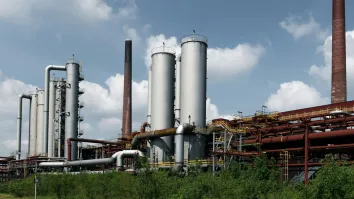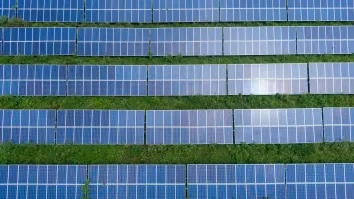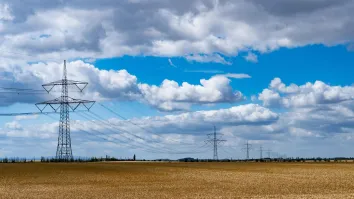Commercial production of white hydrogen unlikely in the short term
By Xia RiHydrogen is touted as the "ultimate energy source of the 21st century." Significant in promoting sustainable global economic development, it gradually becomes one of the important drivers for global energy transition.
However, the vast majority of hydrogen produced globally is mainly derived from fossil energy, a process that emits a large amount of carbon dioxide. This type of hydrogen is also known as "grey hydrogen." In this production process, when carbon dioxide is captured, utilized, and stored, it is termed "blue hydrogen," but it is subject to strict constraints on storage conditions. On the other hand, "green hydrogen" produced by electrolysing water using renewable energy is still very limited due to its high cost, hence it only accounts for less than 4% of total hydrogen production.
In comparison, white hydrogen is naturally generated or exists in the Earth's crust, being a potential and minimally developed clean energy source. It is also referred to as "natural hydrogen," "golden hydrogen," and "geological hydrogen." It possesses at least two major advantages: first, it does not emit carbon dioxide, and second, it does not require water electrolysis for production.
Yet, even as a potential and minimally developed clean energy source, due to factors such as uncertain reserves, early-stage technology, and high extraction costs, its mass commercial production is unlikely in the short term.
From a practical perspective, with the exploration efforts of multiple countries worldwide, more and more reserves of white hydrogen are being discovered. Among them, significant natural hydrogen reservoirs have been found in Mali's Bourakebougou, Australia's Yorke Peninsula, Spain's Monzón, the foothills of the Pyrenees in Spain, and the Lorraine basin in France, estimated at 5 million tons, 1.3 million tons, 5 million to 10 million tons, 1 million tons, and 6 million to 250 million tons of hydrogen respectively. However, whether in overall estimates or individual assessments, white hydrogen reserves are indirectly inferred through investigations of oil and gas or specific geological processes and environments, making it difficult to obtain accurate measurement data, and the actual resource quantity has yet to be confirmed.
Mali is currently the only country in the world actively extracting white hydrogen and benefits from unique geographic conditions. Most other countries are in the early stages of understanding white hydrogen. Some are in the initial phase of white hydrogen exploration, while others, including both nations and enterprises, are just beginning to experiment with white hydrogen extraction. These entities will encounter various challenges and require continuous exploration of innovative technological solutions in areas such as hydrogen exploration, detection and analysis, and leakage management. It is worth noting that white hydrogen accumulations are likely to be very small, offshore, too deep, or in remote areas, which would impose high demands on extraction technology.
The relative cost of extracting white hydrogen remains rather high and that is difficult to change in the short term. In theory, as white hydrogen is a natural renewable energy source, it should be possible to extract it endlessly at a low cost. However, this is not the case in practice. According to estimates, the production cost of white hydrogen is approximately $1 per kilogram, while the production cost of green hydrogen is about $6 per kilogram. HyTerra, a company conducting natural hydrogen exploration in the United States, believes that production at a cost of $1 per kilogram is necessary to compete with natural gas. However, situations similar to Mali's are not common. The deeper the drilling, the higher the purity of white hydrogen. If extensive deposits require deeper drilling, the development cost of white hydrogen may increase rapidly.
Spanish company Helios Aragón states that it can produce natural gas from the vast underground layers at the foot of the Pyrenees Mountains at a cost of EUR 0.75 (approximately $0.82) per kilogram. However, achieving a significant reduction in costs would require waiting for several decades, and it is difficult to say whether the cost would be lower than grey or green hydrogen. Helios estimates on its website that by 2060, the cost of producing white hydrogen will be as low as $0.50-$1.25 per kilogram, while grey hydrogen will cost $0.75-$1.6 per kilogram (currently $2-$4 per kilogram), and green hydrogen will cost $0.75-$3.25 per kilogram (currently $5-$8 per kilogram).
All in all, the global understanding of white hydrogen is still in its early stages, with many unresolved issues in exploration, technology, and application. Therefore, commercial production of white hydrogen is unlikely to be achieved in the short term, and it is even less likely to significantly change the current situation of hydrogen energy and even the new energy supply.


















 Advertise
Advertise






